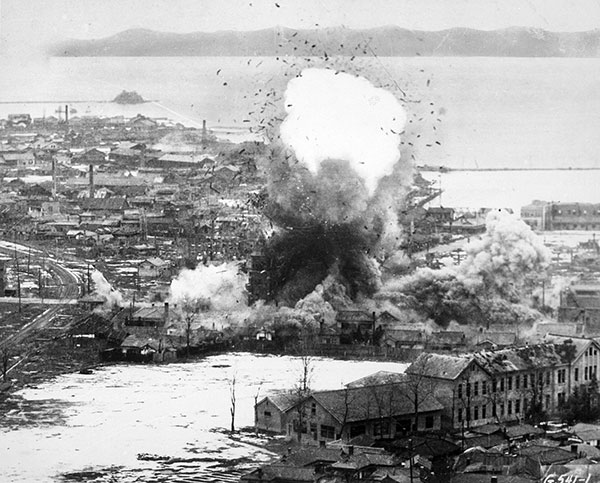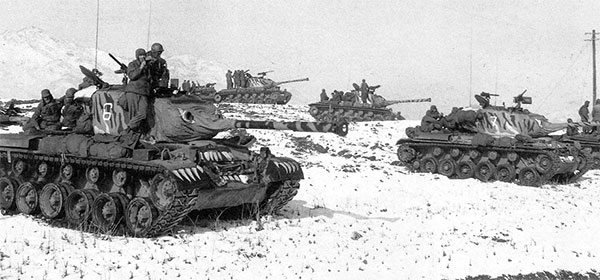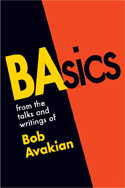#49: 1950-53— Encircling, Threatening and Attacking the Chinese Revolution
January 1, 2018 | Revolution Newspaper | revcom.us
Bob Avakian recently wrote that one of three things that has “to happen in order for there to be real and lasting change for the better: People have to fully confront the actual history of this country and its role in the world up to today, and the terrible consequences of this.” (See “3 Things that have to happen in order for there to be real and lasting change for the better.”)
In that light, and in that spirit, “American Crime” is a regular feature of revcom.us. Each installment focuses on one of the 100 worst crimes committed by the U.S. rulers—out of countless bloody crimes they have carried out against people around the world, from the founding of the U.S. to the present day.
See all the articles in this series.
Introduction: On October 1, 1949, Mao Zedong declared “the Chinese people have stood up.”
Indeed they had, waging three decades of revolutionary struggle under the leadership of Mao and the Chinese Communist Party to defeat the Japanese imperialist invaders, and then China’s own U.S.-backed reactionaries.
The U.S. rulers had tried to prevent China’s revolutionaries from taking power. Between 1945 and 1949, the U.S. funneled billions in aid and military equipment to the pro-U.S., reactionary Nationalist Party (Kuomintang/KMT) under Generalissimo Chiang Kai-shek. The roughly 100,000 American troops stationed in China advised, trained, organized, and supported Chiang’s forces, airlifting 500,000 to different battle fronts—all in hopes of stopping China’s revolution. The U.S. failed, but its actions prolonged the war—without U.S. backing the KMT would have quickly collapsed—and greatly increased the toll on the Chinese people. By 1949 an estimated 2.5 million had been killed, millions more were displaced, the economy collapsed, and tens of millions were left destitute.
The new People’s Republic of China immediately took radical, far-reaching steps to liberate the Chinese people on the road to socialism and ultimately communism. It broke over a century of imperialist domination of China, and centuries of feudal subjugation of its hundreds of millions of peasants, so deeply impoverished they were forced to eat tree bark and leaves, even sell their children, during times of famine or face starvation. The new revolutionary state implemented measures to liberate women, build new social relations and a new ethos of “serve the people,” and turned China into a beacon for revolution worldwide.
After 1949, the U.S. realized it couldn’t quickly overthrow the People’s Republic by invading directly or by simply backing the oppressive, deeply hated Nationalists. So the U.S. sought to encircle, contain, and cripple the new revolutionary state, which it refused to recognize. The U.S. surrounded China (and the then-socialist Soviet Union) with a string of military bases and reactionary regimes, from Japan and Taiwan (part of China occupied by the KMT with U.S. backing) to Southeast Asia. Warships from the U.S. Sixth Fleet circled the region and tens of thousands of U.S. troops were stationed on bases throughout the East Asia region, including South Korea and Japan.
THE CRIME: During the Korean War, the U.S. directly threatened China, including with invasion, war and nuclear attack. This U.S. aggression took the lives of nearly a million Chinese volunteers between 1950 and 1953.
Japan first occupied Korea, a country whose existence stretches back some 1,000 years, in the early 1900s. In 1945, after Japan’s defeat in World War 2, the U.S. and the Soviet Union agreed to temporarily divide the country with the Soviets controlling the area north of the 38th parallel and the U.S. the area to the south. The U.S. quickly set up a repressive, pro-imperialist puppet government. The Soviet Union backed the formation of a nationalist, pro-socialist Korean government (the Democratic People’s Republic of Korea) and its troops left in 1948.

In June 1950, the U.S. orchestrated a massive United Nations-backed assault on Korea, pushing north all the way to the Chinese border.

The U.S. launched a barbaric counteroffensive, creating a wasteland between the war front and the Chinese border. Here troops advance with M4 Sherman tanks painted with tiger faces, February 1951.
When fighting broke out between the two sides in mid-1950, the North’s forces drove south and seemed poised to defeat the U.S. and South Korean forces and liberate the entire Korean Peninsula. In June 1950, the U.S. orchestrated a massive United Nations-backed assault on Korea, involving 342,000 troops, 90 percent American, all under U.S. command. The U.S.-led forces repelled the North Korean offensive, and then decided to push north all the way to the Chinese border, “roll back” the North Korean government, and take control of all of Korea. By late October the U.S. military had reached the Yalu River, which separates China from North Korea, and were directly threatening China.
Under Mao’s leadership, Chinese volunteer armed forces joined North Korean forces in a counterattack to defend China and as an act of internationalism in support of the Korean people. They stunned U.S.-led forces and drove them south past the 38th parallel, and surrounded and threatened to inflict a major defeat on the core of U.S. military forces at Chosin. There was panic in Washington, DC, and intense debate over how to proceed.
At a November 30, 1950 press conference, President Harry Truman said the U.S. was considering attacking Chinese and North Korean forces with nuclear weapons. That same day, an order was given to the Strategic Air Command to “be prepared to dispatch without delay medium bomb groups to the Far East...this augmentation should include atomic capability.”
Some in the government advocated a “limited war” against China, including air attacks, a blockade of the coast and covert introduction of anti-communist forces in southern China. General Douglas MacArthur, who was in overall command of U.S. forces in Korea, argued that China had imposed a “state of war” and the U.S. should respond by dropping 30 to 50 atomic bombs on Manchuria and Chinese cities. Truman and other top officials worried that waging war on China or using nuclear weapons could trigger World War 3 and turn into a disaster for the U.S. (Truman fired MacArthur in the spring of 1951.)
The U.S. launched a barbaric counteroffensive. MacArthur ordered the U.S. Air Force to create a wasteland between the war front and the Chinese border, destroying every “installation, factory, city, and village.” The U.S. used napalm, jellied gasoline, which literally incinerates flesh, for the first time, dropping 32,557 tons on Korea. One official history of the war admitted the U.S. “fired whole villages with the occupants—women and children and ten times as many hidden Communist soldiers—under showers of napalm.”
The U.S. leveled city after city with aerial bombardment, destroyed factories, schools, housing, bridges and other infrastructures and murdered thousands and thousands of North Korean and Chinese troops. They flooded crops and other food supply lines, and bombed huge stretches along the North Korean-China border, including the Chinese city of Dandong on the Yalu River. Historian Bruce Cumings writes that under international law, the U.S. was carrying out genocide in North Korea.
The war remained a stalemate from mid-1951 until an armistice was signed in 1953. By then the U.S. had carried out the mass killing of well over three million people: two million North Korean civilians, 500,000 North Korean soldiers, between 900,000 and a million Chinese soldiers, plus 1.3 million South Korean casualties including 400,000 dead.
THE CRIMINALS
For humanity to advance beyond a state in which “might makes right”—and where things ultimately come down to raw power relations—will require, as a fundamental element in this advance, an approach to understanding things (an epistemology) which recognizes that reality and truth are objective and do not vary in accordance with, nor depend on, different “narratives” and how much “authority” an idea (or “narrative”) may have behind it, or how much power and force can be wielded on behalf of any particular idea or “narrative,” at any given point.
Bob Avakian, BAsics 4:10
U.S. President Harry Truman, who refused to recognize the People’s Republic of China as a legitimate government, declaring: “As long as I am President, if I can prevent it, that cut throat organization will never be recognized by us as the Government of China.” He approved the strategy of surrounding China, dispatching massive numbers of troops and waging war in Korea, attempting to overthrow the North Korean government, and threatening the use of nuclear weapons.
The U.S. State Department under Secretary of State Dean Acheson who had authored major imperialist strategy documents calling for encircling and strangling the Chinese revolution, and played a key role in launching the U.S. war in Korea. The CIA and its chief Walter Bedell Smith; the U.S.military and its Joint Chiefs of Staff who had readied orders to use nuclear weapons in retaliatory attacks against bases in Manchuria, China.
The U.S. imperialist allied forces in the UN that sent invading forces into Korea: Britain, Canada, France, Belgium, the Netherlands, Colombia, Ethiopia, South Africa, New Zealand, Turkey, Greece, Thailand, Philippines and Luxembourg.
The fascistic Syngman Rhee government of South Korea, which pushed for expanding the war into North Korea and overthrowing its government.
The KMT, which served as the key instrument for U.S. imperialist aggression against the communist revolution in China and pushed for war against China.
THE ALIBI
That communism and states like China and the Soviet Union were aggressors and the greatest danger to the world, and that the actions of North Korea and China constituted “naked communist aggression” against freedom-loving South Korea. The U.S. called for the Chinese people to throw off the “foreign yoke” of communism. In December 1950, Truman declared a state of emergency: “Our homes, our Nation, all the things we believe in are in great danger” due to the advance of communism.
THE ACTUAL MOTIVE
Together with the socialist Soviet Union (1917-mid 1950s), the communist-led victory in China posed defeat for, and shrinkage of, the world capitalist-imperialist system and its “freedom” to exploit and plunder the world. China, with one-fourth of the world’s population, together with then socialist Soviet Union, formed a socialist bloc that posed a threat to world imperialism politically, economically, and ideologically. And the Chinese revolution was an inspiration and base area for national liberation and communist revolution in other oppressed nations and for people the world over.
All this posed an immediate challenge to a key U.S. objective in the post-World War 2 period: cementing American dominance and control of the Asian-Pacific region. The U.S. implemented a strategy (NSC-688) of aggressively “containing” the Soviet Union, China, and the expansion of communist influence. It embarked on a rapid military buildup of conventional and nuclear forces, and greatly expanded military aid to the tyrants, fascists, and butchers it counted as its allies and clients.
The U.S. regarded the southern half of Korea and its puppet regime as a major element in its plans to contain and perhaps wage war against the Soviet Union, and also as a step toward surrounding and threatening the People’s Republic of China. By late 1950, China’s revolutionary volunteers were also threatening to shatter key elements of the U.S. military. And all this was threatening U.S. global credibility—”prestige is the shadow cast by power,” Dean Acheson put it in arguing for the U.S. to intervene in Korea.
Sources
Jon Halliday and Bruce Cumings, Korea: The Unknown War, Pantheon Books, 1988
Bruce Cumings, The Korean War—A History, Modern Library, 2011
“Case #93: U.S. Invasion of Korea—1950” in American Crime series and other related articles at revcom.us.
Daniel Ellsberg, The Doomsday Machine—Confessions of a Nuclear War Planner, Bloomsbury USA, 2017
Raymond Lotta, You Don’t Know What You Think You “Know” About... The Communist Revolution and the REAL Path to Emancipation: Its History and Our Future, Revolution newspaper, special edition, November 24, 2013
Selected Works of Mao TseTung (Mao ZeDong) Volume IV: “Cast Away Illusions, Prepare for Struggle”, Farewell Leighton Stuart”. “Why it is Necessary to Discuss the White Papers”, “‘Friendship’ or Aggression?” August 14-August 30, 1949 in response to the U.S. White Papers.
Yves Engler, “The Korean Atrocity: Forgotten US War Crimes and Crimes against Humanity,” GlobalReseach.ca, May18, 2013.
Robert J Barsocchini, “Endless Atrocities: The US Role In Creating The North Korean Fortress-State,” CounterCurrents.org, April 26, 2017.
Volunteers Needed... for revcom.us and Revolution
If you like this article, subscribe, donate to and sustain Revolution newspaper.



